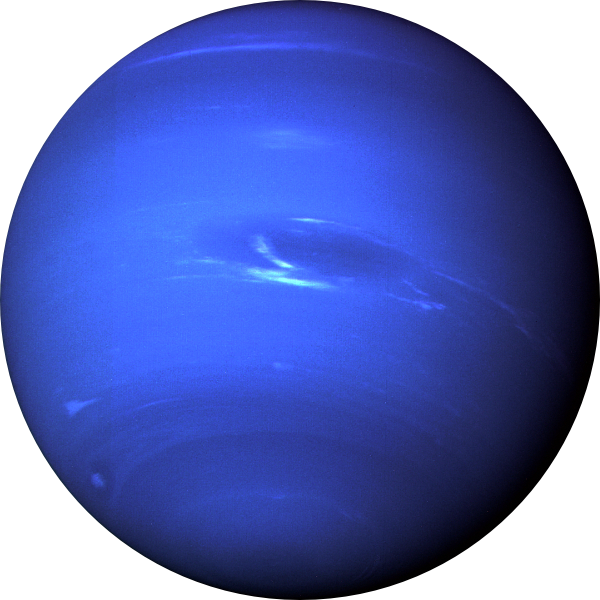Neptune


Planet Profile |
|
|---|---|
| Mass (kg) | 1.02 x 1026 |
| Diameter (km) | 49528 |
| Mean density (kg/m3) | 1640 |
| Escape velocity (m/s) | 23300 |
| Average distance from Sun | 30.07 AU (4,498,252,900 km) |
| Rotation period (length of day in Earth days) | 0.67 (19.1 hours) |
| Revolution period (length of year in Earth days) | 60,190 (164.8 Earth years) |
| Obliquity (tilt of axis degrees) | 29.6 |
| Orbit inclination (degrees) | 1.77 |
| Mean temperature (K) | 48 |
| Atmospheric components |
|
| Rings | Rings are narrow, and contain concentrations of particles called ring arcs. |